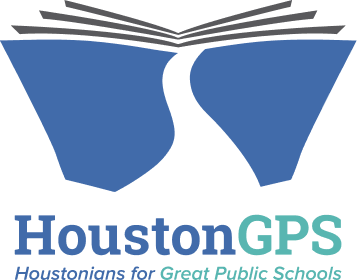Houston ISD Board Meeting Recap 8.15.24
The Houston ISD Board met for a special meeting on the proposed bond on August 8, 2024 and their regular board meeting on August 15, 2024. Highlights include:
The Board voted unanimously to move forward with a bond election this November. The majority of the bond is focused on improving the health and safety of HISD campuses, which have not had a significant investment in over a decade.
Houston ISD outpaced the state in terms of growth for both 3rd grade reading and math, however, both the District and the state did see a slight decline in 3rd grade reading proficiency.
New Education System (NES) schools significantly outperformed the District and the state, especially in math.
BOARD VOTES
All agenda items were approved.
Agenda Item | In Favor | Opposed |
Bond Election | 9 | 0 |
Goal Progress Monitoring Report | 9 | 0 |
Board Self-Evaluation | 9 | 0 |
Consent Agenda | 9 | 0 |
HISD BOARD MOVES FORWARD WITH NOVEMBER BOND ELECTION
On November 5, 2024, voters will have the opportunity to invest in our schools for the first time in over a decade.
Earlier this month, the HISD Board approved two bond orders for the November ballot. The last time HISD held a bond election was in 2012, which only focused on high schools. The District has not invested in elementary and middle schools since 2007, 17 years ago.
If approved by voters, the bond proposal provides each campus with funding for health and safety updates, including HVAC systems, lead abatement, and safety infrastructure. Based on a facility analysis, some campuses will be either partially or entirely rebuilt to better serve students. Beyond health and safety, which makes up the large majority of the bond proposal, future readiness is being prioritized through expansion of the District’s pre-K program and career and technical education centers.
We appreciate the work of the administration and community advisory committee to put forth a bond proposal without a tax rate increase. As November nears, we encourage voters to support our students and our schools through the HISD bond.
STUDENT OUTCOME SPOTLIGHT
Houston ISD is on track for its 3rd grade math goal and with NES campuses significantly outpacing the state in terms of growth.
This month, Superintendent Miles presented the end-of-year STAAR results tied to the District’s 3rd grade reading and math goals. HISD met this year’s target of 39% of students meeting grade level standards and is on track for its overall goal of 53% proficiency by 2028.
While HISD has a long way to go to ensure all students are meeting grade level, the District has narrowed the gap with the state by four percentage points. NES campuses in particular saw significant growth, outpacing the state by 10 percentage points.

All student groups met HISD’s annual targets, except for white students who lagged by just one percentage point. While students with disabilities continue to face the largest achievement gaps, they also experienced a 12 percentage point gain at NES campuses compared to a 1 percentage point decline at non NES campuses.

While the District experienced growth for almost all STAAR subjects, 3rd grade reading saw a slight decline for both HISD and the state.
Across all grade levels and subjects, HISD only saw a decline in STAAR performance in two, including 3rd grade reading. Considering this year’s cohort of 3rd graders experienced unprecedented disruption in their formative grade levels due to the pandemic, these results are not surprising but are an area for targeted improvement.
Superintendent Miles highlighted early education, especially access to high quality pre-K programming as both a root cause and action steps to improve proficiency. Third grade is a pivotal point for literacy development as students move from learning how to read to using their reading skills as a tool to learn. Focusing early on phonics and foundational literacy skills is key to improving 3rd grade reading outcomes and setting students up for future academic success.

Almost all student groups saw a decline in outcomes for reading, with the Black students and Emergent Bilingual students facing the most loss. Emergent Bilingual students are also the only group who saw stagnant results at NES campuses. As HISD works to close achievement gaps and address learning loss, we hope to see a specific strategy emerge for researched-backed language instruction.

HISD has made strides in Special Education compliance and nears 100% compliance
Special education compliance is one of the three exit criteria for HISD’s state intervention. Past Board monitoring updates have highlighted the developing system for the District’s approach to meeting this criteria and supporting students with disabilities. By the end of the year, HSID was 99.8% compliant with federally mandated Annual Review and Dismissal (ARD) meetings, compared to 87% last year.
ARD meetings are convened for each identified student receiving special education services to discuss the student’s status and outline required services. The District must reach 100% compliance, but only missed 9 of the 4,432 required ARD meetings last year.

HISD has also put in place a system to review special education plans through an independent audit team. This year they reviewed over 12% of plans across the District, which directed professional development for areas of identified improvement.
Big Picture: End of Year STAAR data show HISD surpassed the state in on-grade-level growth, but the District still has work to do to increase proficiency and address the decline in 3rd grade reading. NES schools significantly outperformed both the District and the state, especially in Math.
BOARD DISCUSSION HIGHLIGHTS
Board members recognized the gains for NES campuses and focused their discussion on improvements for non-NES campuses


Cassandra Auzenne Bandy and Adam Rivon: HISD has a clear strategy to address learning gaps at NES campuses. Even A- and B-rated campuses have subgroups of students facing achievement gaps. What is the plan to support those campuses, especially in reading?
Administration Response: The District has implemented a defined autonomy system to clarify central support provided to campuses and autonomy over decision making. NES campuses receive prescriptive support but A- and B-rated campuses have significant autonomy to choose their own curriculum and set their master schedule. C- and non-NES D-rated campuses receive additional support for budgeting and curriculum selection.
Regardless of rating, all schools must provide high quality instruction. Both the defined autonomy and principal evaluation systems include specific metrics for achievement gaps to ensure large disparities are addressed with measurable outcomes by the campus action plan.


Audrey Momanae and Angela Lemond Flowers: For non-NES schools with student achievement gaps, how is the District adjusting resources and supporting principals with budgeting?
Administration Response: This budget cycle, HISD was able to make central office cuts to support the NES model without substantially cutting non-NES schools. They will continue to review resource allocation, but non-NES campuses have autonomy over their own budgets and will need to prioritize to meet the needs of all students.
Leaders receive training on systems, action planning, and budgeting. Under definition autonomy, this year they will be given the space to make necessary adjustments before central office will consider stepping in.

Adam Rivon: Considering there are different educational models in non-NES campuses, is the District considering adopting key performance indicators (KPIs) that reflect best practices for each model to track success?
Administration Response: This is something the District can explore but the first step is the campus action plan. Currently STAAR and MAP assessments are measurable KPIs but they can set KPIs for each model.
Board members were also invested in staff development and support


Rolando Martinez and Janette Garza Lindner: As the District gathers data from spot observations, what trends are they seeing with quality of instruction? Is the District mapping this and other staff data along with student outcome data to find correlations?
Administration Response: The District is continuously collecting data on instructional quality through spot observations and Independent Review Team (IRT) scores.
Superintendent Miles has run a data analysis comparing principal evaluations with student outcomes, showing a high correlation. He has also run a comparison of principal experience with outcomes, finding a low correlation. Both of these can be run for teachers based on spot observation and IRT scores.


Rolando Martinez and Angela Lemond Flowers: How is the District ensuring new team members have the training they need? What is the plan to balance culture with high quality instruction?
Administration Response: All teachers engage in demonstration days, where they present lessons to their colleagues for practice and feedback. In addition to summer training, teachers receive regular on-the-job coaching and support.
As the District pushes for higher quality instruction, they are also focused on central office support. Spot observations now have guidelines to differentiate high quality instruction for different learning models like Montessori or International Baccalaureate. Central office is also refining the curriculum to include more scaffolding, or small supports for students who are behind with grade level content.
Time Check: This month, the Board spent 67% of their meeting time focused on student outcome monitoring, excluding time spent hearing from community speakers. At their last regular meeting in June, the Board was focused on the annual budget cycle and did not spend any time on student outcomes. While it is normal to see fluctuations over the school year, the return to student-focused governance is key to driving better outcomes for our kids.
Why this Matters: High-performing school districts have school boards that spend most of their time focused on student outcomes rather than operations. Lone Star Governance recommends boards spend at least 50% of their time engaged in student outcome monitoring.
